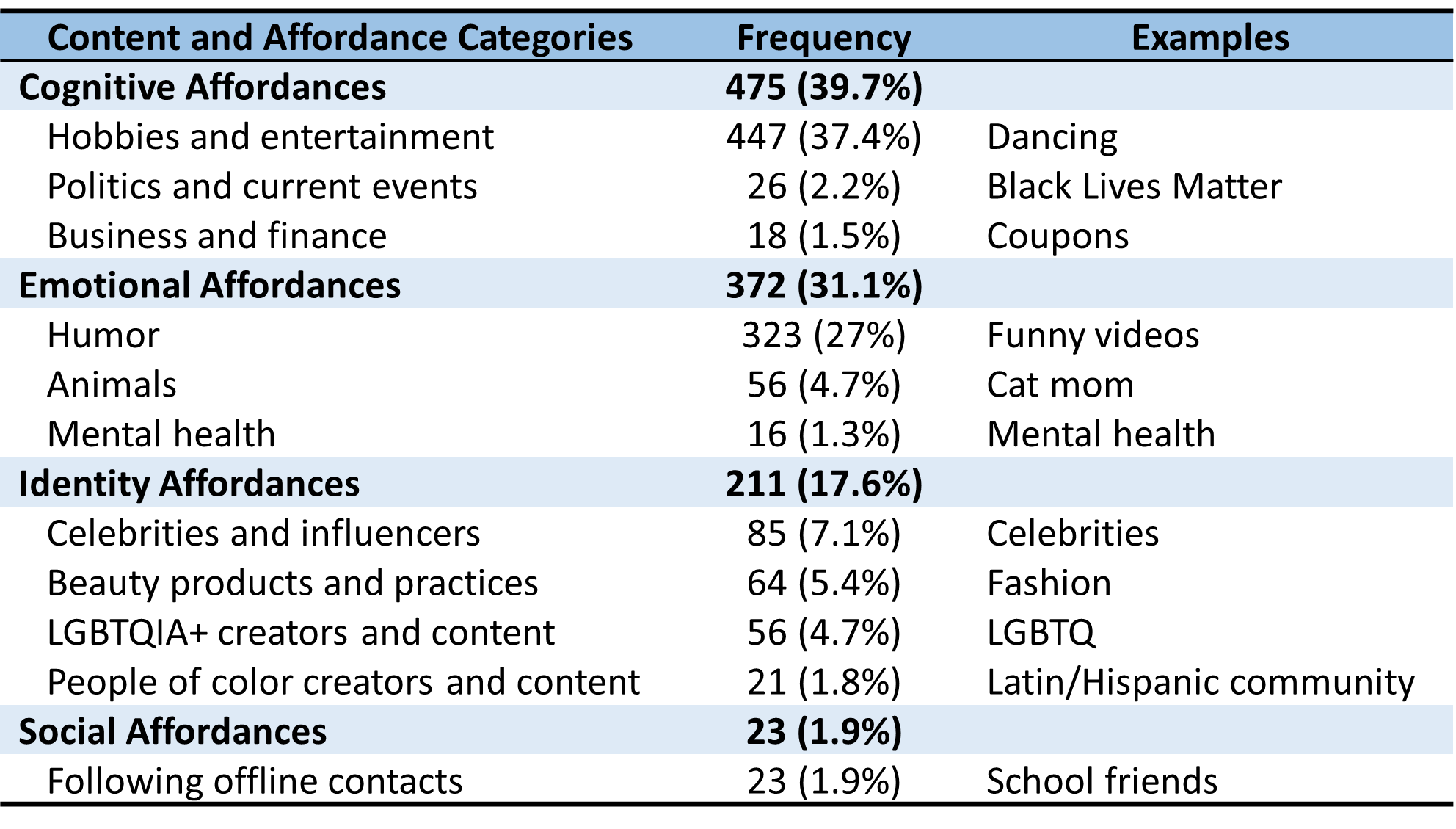Social Media & Technology
Social Media & Technology
620 - Engagement with TikTok Content and Mental Health among Adolescents
Monday, May 1, 2023
9:30 AM - 11:30 AM ET
Poster Number: 620
Publication Number: 620.454
Publication Number: 620.454
Bradley Kerr, University of Wisconsin School of Medicine and Public Health, Madison, WI, United States; Chelsea Olson, University of Wisconsin School of Medicine and Public Health, Madison, WI, United States; Anish Damani, University of Wisconsin School of Medicine and Public Health, Madison, WI, United States; Megan A. Moreno, UW Madison, Madison, WI, United States

Bradley Kerr, MS (he/him/his)
Researcher 1
University of Wisconsin School of Medicine and Public Health
Madison, Wisconsin, United States
Presenting Author(s)
Background: Mental health conditions affect almost 50% of adolescents. Use of specific social media platforms is associated with varying mental health outcomes, potentially related to affordances, defined as design features that foster unique activities. Associations between TikTok use and mental health remain unclear.
Objective: To examine adolescents’ TikTok use, including frequency and engagement with specific content and affordances, and their associations with mental wellbeing and depression.
Design/Methods: This cross-sectional study recruited adolescents aged 13-18 years via Qualtrics panels in fall 2021. An online survey assessed TikTok use frequency, content participants engaged with (free text), mental wellbeing (Warwick-Edinburgh Mental Wellbeing Scale), and depression (Patient Health Questionnaire-8). Content analysis identified common areas of TikTok content from free text responses, which were classified as identity, social, cognitive, or emotional affordances. Analyses tested correlations between TikTok use frequency and mental wellbeing and depression scores. T-tests compared mental wellbeing and depression scores based on common TikTok content. Regression analyses tested associations between affordances and mental health (wellbeing and depression scores), controlling for race and gender.
Results: Among 2206 participants, 49.9% identified as female and 47.0% as white; mean age was 15.91 (SD = 1.77). About 77.3% reported any TikTok use; 52.7% reported daily use. The most common TikTok content participants reported engaging with was hobbies and entertainment (37.4%). Among affordances (Table 1), cognitive were the most common (39.7%). Mean mental wellbeing score was 3.43 (SD = 0.77); mean depression score was 1.00 (SD = 0.77). TikTok use frequency was positively associated with depression scores (r = .131, p < .001). Engagement with humor was associated with lower depression scores (M = 0.97, SD = 0.77) compared to no reported engagement (M = 1.08, SD = 0.79, t(1190) = 2.29, p = .02). Identity affordances were negatively associated with mental wellbeing scores (β = -0.25, p < .001) and positively associated with depression scores (β = 0.25, p < .001) when controlling for race and gender.
Conclusion(s): Findings suggest engagement with different TikTok content and affordances has varying associations with mental health. Future work should examine mechanisms behind these relationships.

